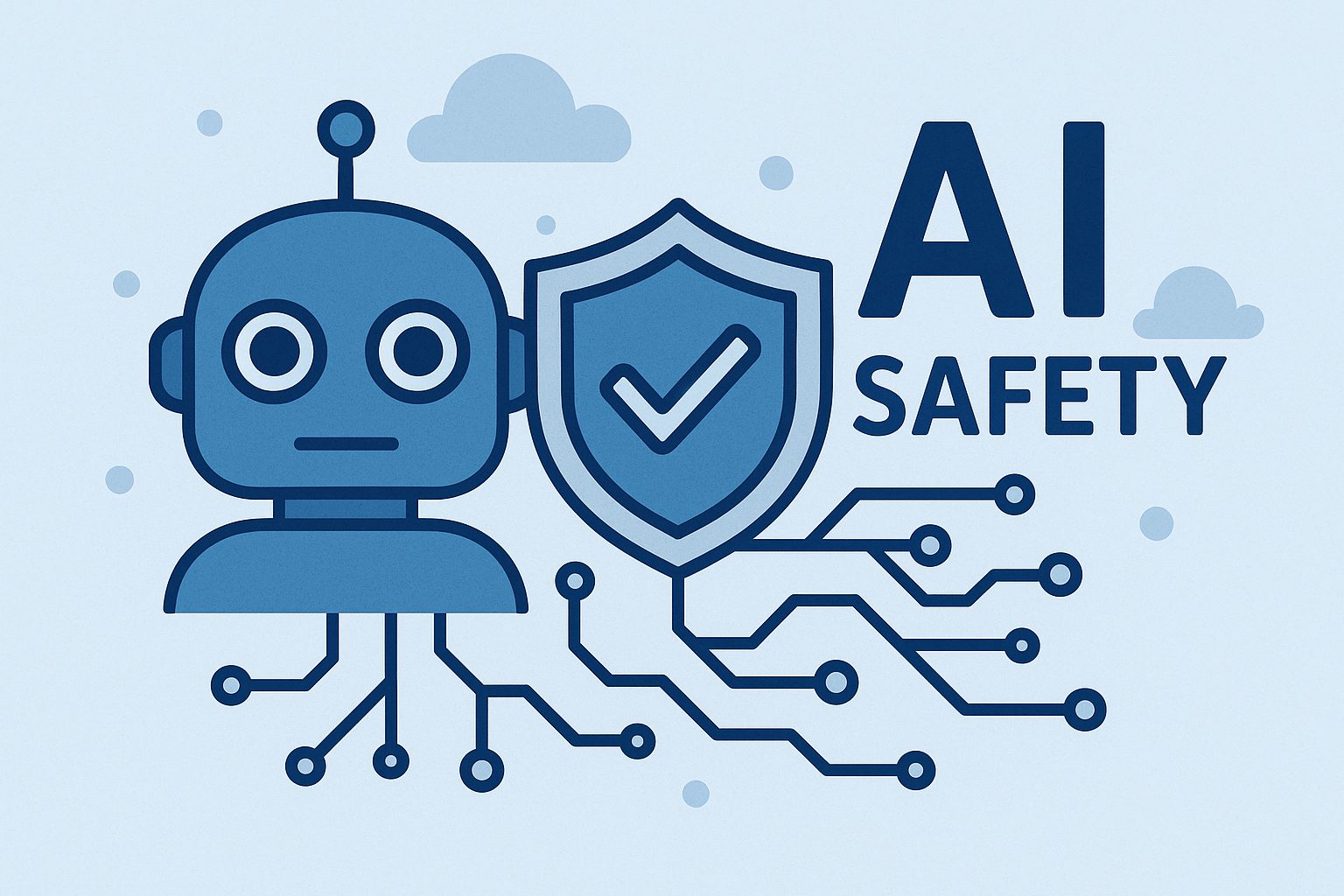
AI is now a daily partner for many developers, and large language models can deliver useful boilerplate, tests, and docs in seconds. But speed can hide risk. LLM-generated code can smuggle subtle security flaws or even unintentionally embed malicious behavior. This article explains the real-world AI malware risks in LLM-generated code, how prompt injection and data poisoning raise the stakes, why supply chain threats matter, and what secure guardrails you can put in place across your coding workflow and CI/CD pipeline.
AI malware risks in LLM-generated code today
LLMs are trained to predict plausible code, not to guarantee safe code. That distinction matters. Model outputs can include unsafe defaults like weak crypto, insecure deserialization, or missing input validation. When rushed into production, these patterns create attack paths that look like malware when exploited: command injection, SSRF, or privilege escalation. Even when the code is not intentionally harmful, it can function as an unguarded door for later attacks.
Another risk is hidden side effects. A snippet may silently disable certificate checks, log sensitive data, or fetch remote resources without verification. These shortcuts are attractive because they “just work,” but they widen the blast radius if an attacker gains a foothold. In security reviews, we often find LLM-authored code that uses powerful APIs with no least-privilege boundaries, turning simple bugs into critical incidents.
Model hallucinations also play a role. When an LLM invents a function, package, or API, developers sometimes install an unknown library that “sounds right.” If that library is malicious or compromised, it can run arbitrary code at install-time or during runtime. This is how AI-assisted development can accidentally become a malware delivery channel, especially in ecosystems with easy package publishing.
Finally, LLMs can normalize risky patterns at scale. If a team adopts model outputs with limited review, insecure patterns propagate across services and repos. Attackers then have a consistent set of weaknesses to exploit across your stack. The net effect is a form of “AI-amplified technical debt” that looks benign in code review but translates to real-world compromise risk.
Prompt injection and data poisoning risks
Prompt injection lets untrusted input steer an LLM’s behavior in ways the developer didn’t intend. In code-generation, a poisoned README, API description, or config file can push the model to emit insecure code or suggest dangerous commands. When you wire an LLM into tools that can browse repos or ingest docs, attacker-controlled text can become a control surface that quietly alters outputs.
RAG (retrieval-augmented generation) expands the attack surface. If your model retrieves snippets from internal wikis, issue trackers, or package docs, an attacker who can edit those sources can implant instructions that bias the code the model produces. Even without tool use, persuasive language can override weak guardrails, creating insecure scaffolding that developers accept as helpful suggestions.
Data poisoning is the longer game. If training or fine-tuning data includes adversarial examples, the model may learn to prefer insecure libraries, misleading patterns, or subtly flawed defaults. Poisoning can occur in public code corpora, cloned mirrors, or even community tutorials. The effects can be hard to detect because the model still “looks” competent while consistently picking risky approaches.
Defense starts with isolation and validation. Treat all model context as untrusted input. Apply content filters to retrieved documents, restrict tool actions, and require explicit human approval for high-risk suggestions. Use allowlists for APIs and packages, and log which prompts, contexts, and outputs lead to code changes. This creates an auditable trail and limits the impact of prompt injection or poisoned references.
Malicious packages and supply chain attacks
LLMs often propose dependencies to solve problems quickly. Attackers know this and publish typosquatted or lookalike packages that mimic popular names. If a developer copies the suggestion without verifying the source, they can import malware into the build. Some packages execute code at install-time, making compromise happen before your tests even run.
Dependency confusion is another trap. Internal module names can be hijacked on public registries with higher version numbers. If your config or tooling defaults to the public source, the build can pull a malicious package automatically. LLMs that suggest version bumps or “latest” tags can nudge teams into this pitfall, especially in multi-repo monorepos or polyglot stacks.
Containers and base images are part of the same chain. A model might recommend a “lightweight” image that is unmaintained or includes risky shells and tools. Hidden layers can bring outdated OpenSSL, glibc, or vulnerable shells that expand your attack surface. Because the model is optimizing for plausibility, it won’t verify signatures, SBOMs, or provenance.
Mitigation requires a curated supply chain. Maintain an internal registry with vetted packages, pin versions and hashes, enforce signature verification where supported, and generate SBOMs for every build. Use policy-as-code to block unapproved dependencies and base images. When the LLM suggests a library, your tooling should automatically map it to a safe, approved equivalent or require review before adoption.
Secure coding and CI/CD guardrails for LLMs
Set expectations: treat LLM output as a junior developer’s draft, never final code. Require human review for security-sensitive areas like auth flows, crypto, deserialization, and shell execution. Encourage the model to cite sources so reviewers can verify patterns. Promote least-privilege defaults and prefer deny-by-default templates for network, file, and process access.
Add controls to your pipeline. Run static analysis, secrets scanning, and dependency checks on all AI-authored code. Enforce license checks, pinned versions, and vulnerability gates. Scan IaC and container configs for risky settings like wide-open security groups or disabled TLS verification. Block merges when high-risk findings appear, and route to security reviewers.
Secure the AI workflow itself. Use red-teaming prompts in staging to see how the model behaves under hostile inputs. Restrict tool use and outbound network access for agents. Strip secrets from prompts and logs; use short-lived credentials for any automated actions. Keep an audit trail connecting prompts, retrieved context, and final diffs, so you can trace risky changes.
Invest in education and templates. Provide secure-by-default code samples, internal libraries with hardened wrappers, and lint rules that catch common footguns like eval, subprocess misuse, and unsafe deserialization. Build a culture where developers expect to challenge AI suggestions and can quickly escalate questionable patterns to security engineers.
FAQ
Q: Is LLM-generated code safe for production?
A: It can be, but only after review, testing, and scanning. Treat it as a draft that must pass the same gates as human-written code.
Q: How can I spot AI-driven malware in my repo?
A: Look for unexpected dependencies, install-time scripts, disabled security checks, network calls in unusual places, and code that fetches or executes remote content without verification.
Q: Should we block AI coding tools?
A: Not necessarily. With guardrails—curated dependencies, code review, automated scanning, and clear policies—teams can gain speed without sacrificing security.
Q: What metrics help manage risk?
A: Track AI-authored diffs merged, time-to-fix for findings, unapproved dependency attempts blocked, and coverage of SAST/DAST/secret scans across repos.
AI coding assistance can boost productivity, but it also changes your threat model. LLMs can recommend risky patterns, pull in malicious packages, and amplify subtle mistakes into systemic vulnerabilities. By combining human review with strong supply chain controls, automated scanning, and clear policies for prompts and tools, you can harness AI safely. Treat model output as untrusted until proven otherwise, and build guardrails that make the secure path the easiest one.

Leave a Reply